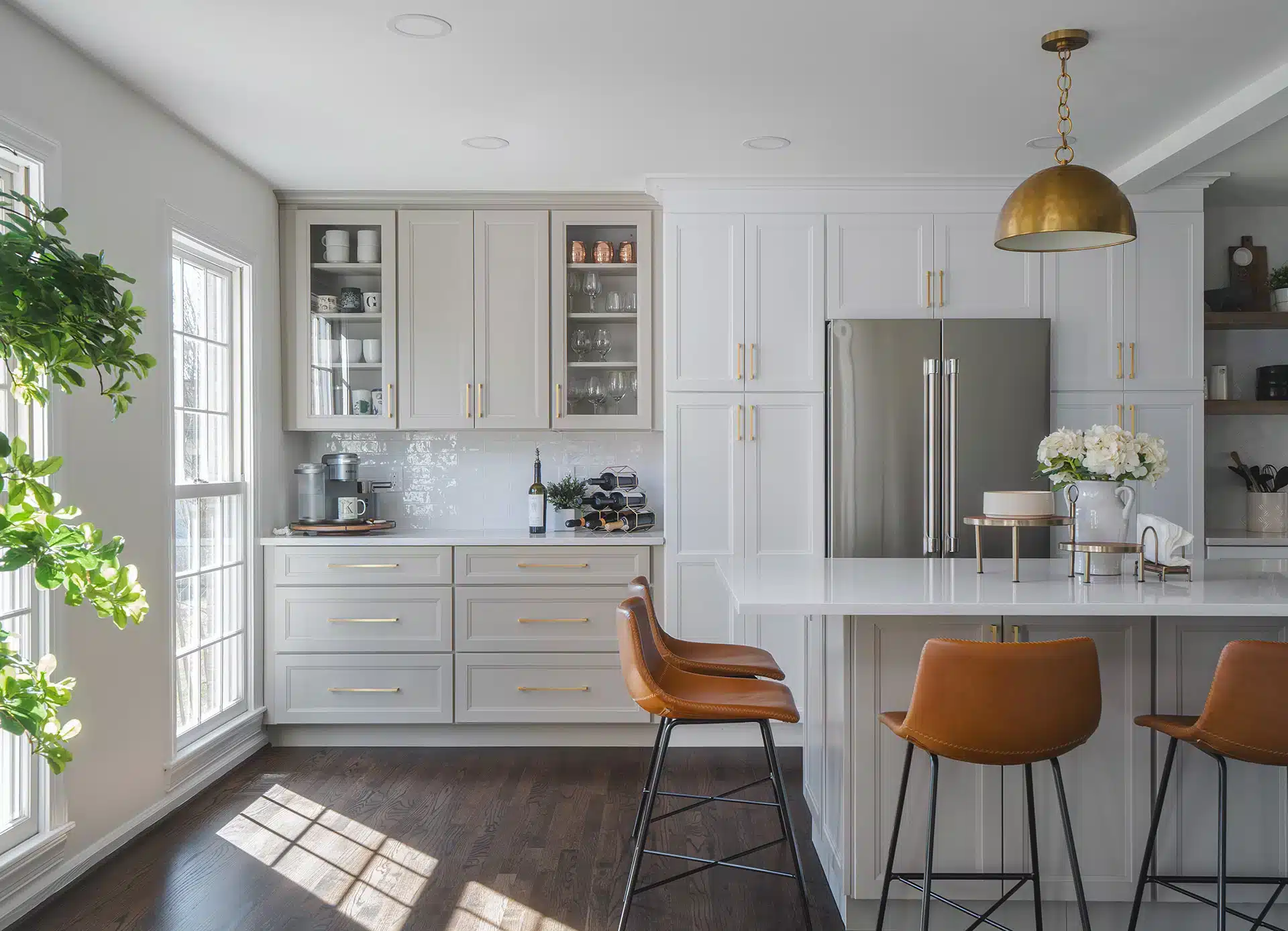The transitional kitchen is gaining popularity among homeowners looking for a versatile and timeless design. This style combines the best of both traditional and modern elements, creating a balanced and inviting space.

Whether you’re planning a complete overhaul or a few strategic updates, understanding the key features and benefits of a transitional kitchen can help you achieve a perfect blend of classic and contemporary.
What is a Transitional Kitchen?
A transitional kitchen blends the warmth and comfort of traditional designs with the sleek and clean lines of contemporary styles. This design approach offers a flexible framework that can be personalized to suit various tastes and preferences. Key characteristics include neutral color palettes, simple cabinetry, and a mix of natural and manufactured materials.
Key Features
- Neutral Color Palette: Shades of white, gray, beige, and soft pastels dominate, creating a calm and welcoming atmosphere.
- Simple Cabinetry: Shaker-style or flat-panel cabinets with minimal embellishments are common, providing a clean and streamlined look.
- Mix of Materials: A combination of wood, stone, glass, and metal adds texture and visual interest, enhancing the overall aesthetic.
- Balanced Design Elements: The style maintains a balance between traditional and modern, with classic elements like crown molding paired with contemporary hardware and fixtures.
Benefits
A transitional kitchen offers numerous advantages that make it a popular choice for many homeowners:
- Timeless Appeal: The blend of styles ensures that the kitchen remains stylish and relevant over time.
- Versatility: The neutral and adaptable design can easily accommodate changing tastes and trends.
- Increased Home Value: The universally appealing style can attract a broad range of potential buyers, enhancing your home’s marketability.
- Functional Layouts: The design prioritizes practicality and efficiency, making everyday tasks easier and more enjoyable.
Tips for Transitional Kitchen Remodeling
To successfully design a transitional kitchen, consider the following tips:
- Choose a Neutral Base: Start with a neutral color scheme and add pops of color through accessories and accents.
- Incorporate Mixed Materials: Blend different textures and finishes to create depth and interest.
- Opt for Simple Cabinetry: Select cabinetry with clean lines and minimal ornamentation.
- Balance Old and New: Mix traditional elements like farmhouse sinks with modern features such as stainless steel appliances.
- Focus on Functionality: Ensure that the layout and design elements enhance the kitchen’s functionality and ease of use.
Frequently Asked Questions
A transitional kitchen offers the perfect solution for those who appreciate both classic and contemporary design elements. By combining the best of both worlds, this style creates a timeless, versatile, and highly functional space that can evolve with your changing needs and preferences. Whether you’re embarking on a major renovation or making a few updates, a transitional kitchen can provide the ideal backdrop for your culinary adventures.



